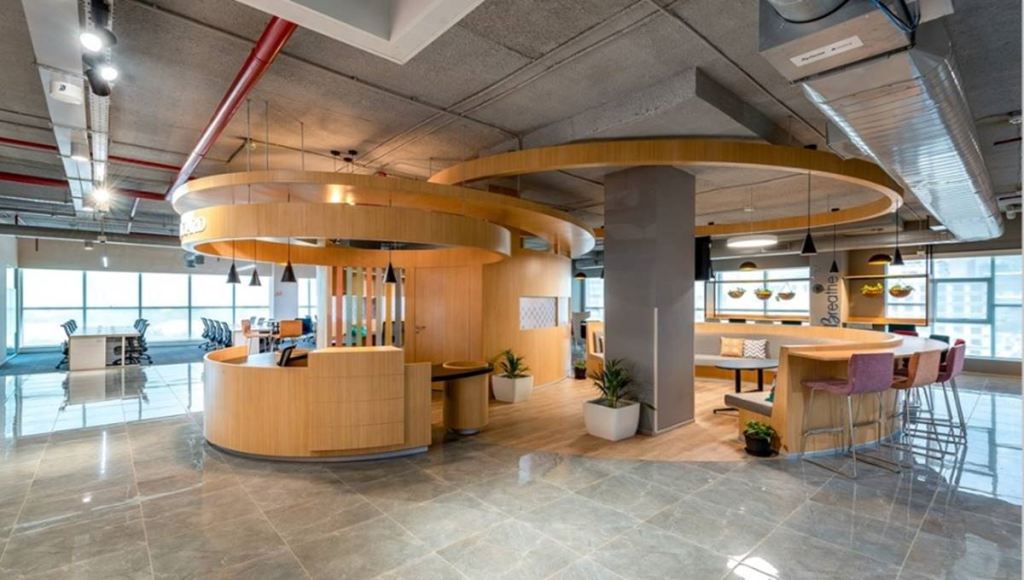The commercial real estate outlook presents a mixed bag across segments with strong consumption trends driving the growth for retail mall operators and warehousing sectors. However, a report by ICRA stated that the office segment, despite being resilient, is facing a slowdown in leasing from technology-based sectors due to global headwinds.
Retail mall operators: Strong consumption trends to drive revenue growth
Per ICRA, rental income for mall operators is expected to increase by 9-10 per cent YoY in FY2024 and a mildly lower 8-9 per cent in FY2025, driven by healthy occupancy levels, growth in trading values and rental escalations. Across the top six cities in India, new supply of 9-10 million square feet (msf) and around 6 msf is expected in FY2024 and FY2025, respectively. Though the net absorption was healthy in 9M FY2024, the vacancy levels rose by 100 bps to 20 per cent as of December 2023 due to higher new supply, which has become operational recently and is yet to ramp up fully. ICRA expects the occupancy levels to sustain at 81-82 per cent as of March 2024 (PY: 81 per cent) and improve to 82-83 per cent by March 2025.
Anupama Reddy, Vice President and Co-Group Head, Corporate Ratings, ICRA, said, “Retail mall operators witnessed a strong rebound in FY2023 in terms of footfalls and trading values and the trends continued in 9M FY2024. Backed by expected growth in footfalls, increase in spend for footfall driven by premiumisation and strong urban consumption, ICRA projects the trading values to improve by 14-15 per cent in FY2024 and record 10-12 per cent expansion in FY2025 on a high base.”
Segments like jewellery, electronics, apparels, beauty care products of premium brands, and entertainment witnessed above-average consumption growth in the recent quarters, which is expected to continue in the near to medium term with strong consumer demand. “However, the increase in digital penetration and continued threat from e-commerce players particularly in the retail (fashion) segment which is extending to some of the premium brands is a major challenge for the retail mall developers,” Anupama Reddy added. The credit profile of the mall operators is expected to remain stable.
Warehousing: Growth driven by increasing needs of massive consumption market
Conferring the ‘Infrastructure’ status to the logistics and warehousing sector, the rapid expansion of new-age sectors like e-commerce and allied services, the growing needs of the massive consumption market, and the Government’s focus on making India as a manufacturing hub has resulted in a steep uptick in warehousing demand. Moreover, there is a growing preference by the occupiers for Grade A, ESG-compliant warehouses with modern storage solutions, said ICRA. Over the last five years, the supply of grade A warehouses has grown at a healthy CAGR of 24 per cent to 166 msf in FY2023 and is expected to be around 195 msf in FY2024, with an estimated increase of 15-16 per cent YoY in FY2025.
Anupama Reddy said, “ICRA anticipates the credit profile of the warehousing players to remain stable. The occupancy levels are likely to remain high at 95 per cent in FY2025, driven by e-commerce, 3PL and manufacturing-led demand. The rental income and the NOI are expected to grow by ~30-32 per cent in FY2025, supported by the commencement of rentals from newly added capacities and scheduled rental escalations. The leverage measured by debt/NOI is expected to remain comfortable in the range of 5.3-5.5 times in FY2025, improving from around 6.3 times in FY2024 following healthy growth in the NOI. The coverage indicators measured by the DSCR are forecast to remain around 1.55 times in FY2025, improving from 1.4 times in FY2024.”
Office segment: Global macroeconomic headwinds loom over office leasing
ICRA estimates the net absorption of office leasing across the top six cities in India to decline by 19-20 per cent to ~47-48 msf in FY2024 and witness a mild growth of 4-5 per cent in FY2025. With the influx of a huge supply of around 60-62 msf each in FY2024 and FY2025, the vacancy levels are expected to inch up to 16.0-16.2 per cent during FY2024 and FY2025 from 15.5 per cent in FY2023 as supply is expected to outpace absorption.
Anupama Reddy reiterated, “For the office segment, despite an increase in physical occupancy, several tenants chose to adopt a cautious approach given the global macroeconomic headwinds, resulting in slowdown in leasing activity in the technology-based sectors. This was also visible from a decline in net absorption by 17 per cent YoY in 9M FY2024 for the top six cities. However, the demand from global capability centres (GCCs), non-IT MNCs and domestic corporates remained healthy, supporting the leasing levels.”
“In December 2023, the Government of India announced a partial and floor-wise denotification of IT-SEZs, which is expected to revive their attractiveness in the medium term. Favourable demographics, a highly skilled and cost-effective talent pool, availability of high-quality office spaces at competitive rentals, would continue to drive demand for the Indian office portfolio in the medium to long-term,” she added.
The credit profile of ICRA’s sample set of office players is expected to remain stable, driven by healthy growth in the NOI, backed by improvement in occupancy and higher rentals.


